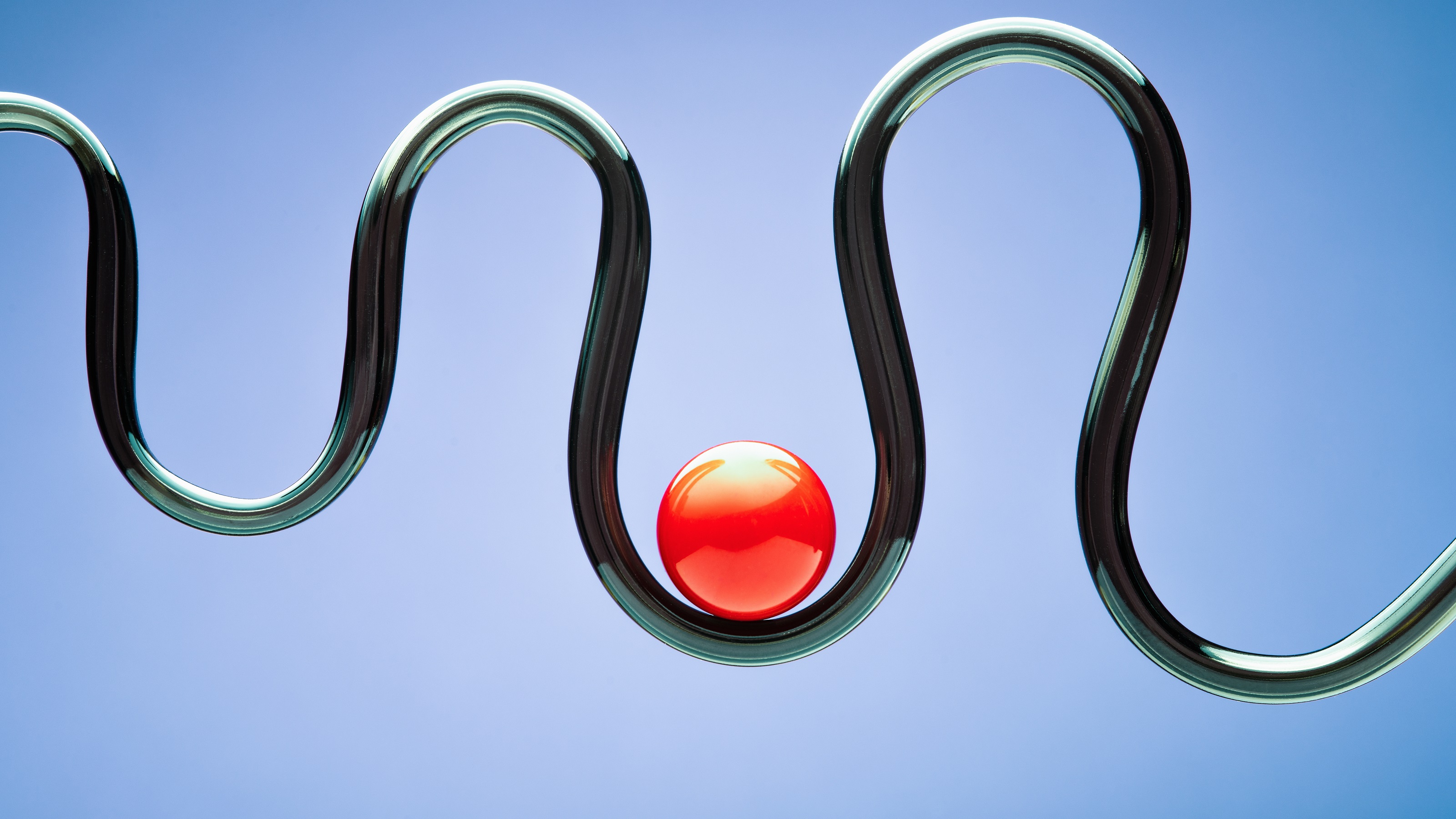What You Need to Know About the Shadow Banking System Now
There's a chance that you may have a loan with a "shadow bank" and not even know it. What exactly are shadow banks, and what risks and rewards do they represent?


The term “shadow banking” often elicits thoughts of shady back-alley dealings and loan sharks waiting to take drastic measures against debtors who can't pay. While that makes for an interesting story, it couldn’t be further from the truth.
Most consumers may not pay much attention to shadow banking because they don’t feel like it affects them personally. The problem is that the industry has grown so large that many people have loans originated through shadow banking, and they don’t even realize it.
Quicken Loans surpassed Wells Fargo recently to become the largest mortgage lender in the country, according to a 2018 press release. Quicken has approximately 17,000 employees and closed nearly a half-trillion dollars of mortgage loans from 2013 through 2018. The most interesting fact of all? Quicken isn’t a bank. It’s a prime example of the vastness that shadow banking represents in the economy.

Sign up for Kiplinger’s Free E-Newsletters
Profit and prosper with the best of expert advice on investing, taxes, retirement, personal finance and more - straight to your e-mail.
Profit and prosper with the best of expert advice - straight to your e-mail.
What Is Shadow Banking?
Like many complex parts of our economy, shadow banking is often misunderstood. However, it is important to know what shadow banking really is, how it supports the economy and the risks it poses. According to the latest Financial Stability Board report, non-bank financing provides an alternative to traditional bank loans and is a major contributor to overall economic activity and growth. However, the benefit of that growth also comes with major risks to the economy.
When most people think of banks, they think of traditional commercial banks like Wells Fargo, Bank of America, Citibank and others. What makes these institutions true banks is the fact that they take deposits from savers and lend them out to borrowers in the form of mortgages, car loans and other debt. These traditional commercial banks are heavily regulated by federal and state authorities and must abide by Federal Reserve bank restrictions.
Shadow banking, on the other hand, refers to any type of lending provided by financial institutions that are not commercial banks and not regulated as banks. Like traditional banks, shadow banks rely on short-term funds to make longer-term loans. That’s where the similarities end. Since shadow banks are not depository institutions, they do not have deposits to lend out to borrowers. Instead, they rely on money from investors for making loans.
The difference? Unlike deposits that are FDIC insured, investor dollars collected through the shadow banking industry are not insured. It seems simple and straightforward, but that simple difference alone creates a major risk for investors and for the entire financial system.
Risk No. 1 – Investor Safety
Bank deposit accounts and money market accounts are insured by the FDIC and pose very little risk to account holders. Money market funds and other short-term, non-bank savings vehicles — the funding source for many shadow bank lending operations — are not insured. There’s really nothing wrong with providing investors with a decent short-term return in exchange for using their funds to make longer-term loans at higher rates, and conceptually, if investors understand these risks, then there should not be a problem. That’s how commercial banks have operated for centuries.
The difference lies in what happens when things go wrong. During the 2008 financial crisis, commercial banks were able to borrow money from the Federal Reserve to help weather the storm and provide account holders with access to their deposits. Shadow banking institutions cannot do that. They do not have access to short-term, government-backed funding and instead are forced to sell assets to raise cash and return money to investors. When asset prices are falling, as they were in 2008 and 2009, institutions are forced to sell assets at depressed prices just to be able to return money to investors, and it creates a downward spiral. This could make the next recession worse as dropping assets are sold at lower and lower prices to pay off investors.
That leads to much broader problems and bigger shocks to the overall economy and financial system.
Risk No. 2 – Liquidity
Just as an engine needs gasoline to run, the financial system needs access to short-term capital in order to operate. Banks and nearly every other monetary institution rely on access to short-term funds to meet liquidity needs and financial obligations. Real banks can access short-term funding in many ways that shadow banks cannot. When there is no short-term funding available, institutions that rely on it will suffer and possibly even fail in a short period of time. This is the reason the 2008 financial crises became so dangerous so quickly.
Since 2011, the Financial Stability Board, an international body that monitors and makes recommendations about the global financial system, has been monitoring the shadow banking system worldwide. Their latest report showed that shadow banking assets increased 7.6% to $45 trillion in 2016, growing faster than the rate of banks and insurance companies worldwide. To put things in perspective, shadow banking is now larger than the world economy in terms of total GDP, according to the report.
The good news is that shadow banking has been a major contributor to economic expansion since the 2008 financial crisis. The bad news is that there is always a balance between risk and reward. When the reward seems too great, the risk probably is too.
Risk No. 3 – Recession
It’s very difficult to predict a recession ahead of time, and the real causes often only become clear well after the fact. Looking back to the 2008 financial crisis, there were a lot of factors at play. Regardless of the specific cause or causes, there is no doubt that shadow banking played a major role in the severity of the crisis. A late 2018 Bloomberg article on shadow banking summarizes the role it played and points out that the most devastating liquidity problems were not due to a “run” on traditional banks as in the Great Depression. Rather, they were a result of problems caused by non-bank institutions like Lehman Brothers and Bear Stearns. With any portion of the economy being so dependent on an industry as large as shadow banking, there are bound to be risks involved.
The real question is whether post-2008 regulations and scrutiny of the shadow banking world will be enough to avert or minimize another similar crisis in the future.
In the meantime, it’s hard to decide whether to be thankful that we have shadow banking institutions to support the growth of the economy or to be fearful of what the future may hold as a result of that unchecked growth.
What Does All This Mean for Borrowers and Investors?
If you’re an investor who's in or near retirement, the main thing to take away from this is to make sure you don’t have more risk than you’re comfortable with at this age and stage of your life. If during the last crash you saw your 401(k) turn into a 201(k), now that we’re 11 years into this current bull market (the longest bull market in history) don’t let your guard down by having more risk than you’re comfortable with.
Don’t be lulled into a sense of complacency believing that stocks are “safe” just because they’ve been going up for almost 11 years straight. Remember that stocks are designed for potential growth and non-guaranteed dividends, they are not designed for safety of your principal. And don’t let the next recession, whenever it comes, catch you by surprise. Since World War II, the U.S. has had a recession on average every five years, and it’s been 11 years since our last recession, so make sure you have a well-diversified portfolio that has the right amount of risk for you.
People often ask me how much in stocks they should have in their portfolio, and I always say that if you’re a retiree who doesn’t have a high appetite for risk then you shouldn’t have more than 45% of your retirement portfolio in stocks. The other 55% should be in safer assets, such as bonds, preferred stocks, CDs, structured notes and guaranteed, fixed annuities (NOT variable annuities) from A+ rated household-name insurance companies. A truly diversified portfolio is one of the most important rules of retirement.
Investment advisory services offered only by duly registered individuals through AE Wealth Management, LLC (AEWM). AEWM and Stuart Estate Planning Wealth Advisors are not affiliated companies. Stuart Estate Planning Wealth Advisors is an independent financial services firm that creates retirement strategies using a variety of investment and insurance products. Neither the firm nor its representatives may give tax or legal advice. Investing involves risk, including the potential loss of principal. No investment strategy can guarantee a profit or protect against loss in periods of declining values. Any references to protection benefits or lifetime income generally refer to fixed insurance products, never securities or investment products. Insurance and annuity product guarantees are backed by the financial strength and claims-paying ability of the issuing insurance company. Any media logos and/or trademarks contained herein are the property of their respective owners, and no endorsement by those owners of Craig Kirsner or Stuart Estate Planning Wealth Advisors is stated or implied. #168554
Disclaimer
The appearances in Kiplinger were obtained through a PR program. The columnist received assistance from a public relations firm in preparing this piece for submission to Kiplinger.com. Kiplinger was not compensated in any way.
Get Kiplinger Today newsletter — free
Profit and prosper with the best of Kiplinger's advice on investing, taxes, retirement, personal finance and much more. Delivered daily. Enter your email in the box and click Sign Me Up.

Craig Kirsner, MBA, is a nationally recognized author, speaker and retirement planner, whom you may have seen on Kiplinger, Fidelity.com, Nasdaq.com, AT&T, Yahoo Finance, MSN Money, CBS, ABC, NBC, FOX, and many other places. He is an Investment Adviser Representative who has passed the Series 63 and 65 securities exams and has been a licensed insurance agent for 25 years.
-
 Stock Market Today: Stocks Gain on Tech, Auto Tariff Talk
Stock Market Today: Stocks Gain on Tech, Auto Tariff TalkThe Trump administration said late Friday that it will temporarily halt tariffs on some Chinese tech imports.
By Karee Venema
-
 Sam's Club Plans Aggressive Expansion: Discover Its New Locations
Sam's Club Plans Aggressive Expansion: Discover Its New LocationsSam's Club expansion plans will open up to 15 new stores each year. Learn where they plan to open in 2025.
By Sean Jackson
-
 Home Insurance: How to Cut Costs Without Losing Coverage
Home Insurance: How to Cut Costs Without Losing CoverageNatural disasters are causing home insurance premiums to soar, but don't risk dropping your coverage completely when there are ways to keep costs down.
By Jared Elson, Investment Adviser
-
 Why Homeowners Insurance Has Gotten So Very Expensive
Why Homeowners Insurance Has Gotten So Very ExpensiveThe home insurance industry is seeing more frequent and bigger claims because of weather, wildfires and other natural disasters.
By Karl Susman, CPCU, LUTCF, CIC, CSFP, CFS, CPIA, AAI-M, PLCS
-
 Stick to the Plan: Don't Panic During Economic Uncertainty
Stick to the Plan: Don't Panic During Economic UncertaintyTake a breath and step back. Focus on a solid fiscal foundation to stabilize your investments during stock market volatility.
By Eric Lahaie, CFS®, RICP®
-
 How Inflation Affects Your Finances and How to Stay Ahead
How Inflation Affects Your Finances and How to Stay AheadThe cost of goods and services is certain to rise over time, making it essential to have a financial plan that will help you keep pace.
By Kyle D. Sikes
-
 Now's a Great Time to Become a Financial Adviser: Here's Why
Now's a Great Time to Become a Financial Adviser: Here's WhyThere's a growing need for financial advisers. Why not take on a role that offers earning potential and work-life balance and helps change lives?
By John Roberts
-
 His Employees Don't Work 'For' Him, But 'With' Him
His Employees Don't Work 'For' Him, But 'With' HimWhile it might not seem that way, there are indeed employers out there who value the relationships they have with their employees. Here's an example.
By H. Dennis Beaver, Esq.
-
 How to Balance Your Insurance Expectations vs the Reality
How to Balance Your Insurance Expectations vs the RealityJust because you have an insurance policy doesn't mean that you're totally covered in the event something bad happens.
By Karl Susman, CPCU, LUTCF, CIC, CSFP, CFS, CPIA, AAI-M, PLCS
-
 When Your Car Is Fixed, But You've Still Got the Problem
When Your Car Is Fixed, But You've Still Got the ProblemThis reader's experience with trying to get squealing brakes fixed under an extended warranty mirrors what others are experiencing these days.
By H. Dennis Beaver, Esq.